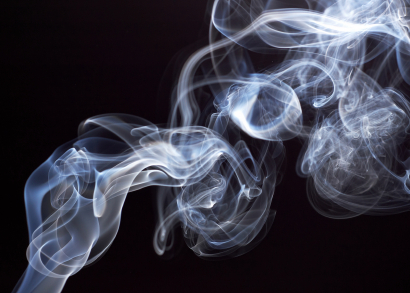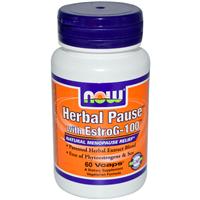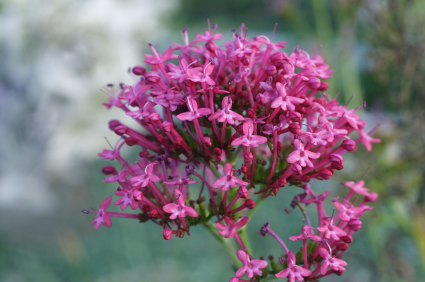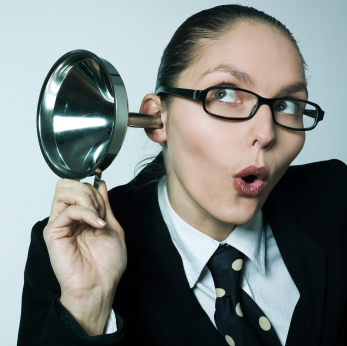Botanically speaking…EstroG-100
Got botanicals? You might want to get this one. Although the traditional Japanese medicine Kampo supplement TU-025 doesn’t appear to offer much hope in the hot flash department, a well-known botanical supplement widely used in Korea, EstroG-100, may. In fact, it appears that the proprietary blend of Korean herbs in EstroG-100, including Cynanchum wilfordii, Phlomis ubrosa and Angelica gigas are not only safe but help in a number of menopausal symptoms in addition to hot flashes.
So, what’s the lowdown on EstroG-100? Basically, the supplement has been studied in Asian women and we know from other alternative strategies that effectiveness among different ethnicities don’t always translate. Hence, I was pretty interested to learn that researchers decided to see if EstroG-100 would work on menopausal symptoms in a small group of white- and non-White Hispanics and African American women who were pre-, peri or menopausal. Over a three month time period, women either took 2 EstroG-1oo tablets or placebo twice daily and then using a scientific index, self-reported and rated symptoms, including:
- hot flashes
- cold swewats
- numbness, tingling
- insomnia
- nervousness, depression or feeling blue
- dizziness
- fatigue
- muscle and joint pain
- headache
- pounding heart
The study results suggest that EstroG-100 is not only safe, but it has a significant impact on a few very troublesome symptoms, namely hot flashes and sweats, insomnia, nervousness, feeling blue, dizziness and fatigue. Overall, menopausal symptom scores declined by more than half in women using EstroG-100 compared to women taking placebo. Moreover, initial, favorable changes were seen as early as 6 weeks. Estro-G also appeared to have a beneficial effect on the severity of vaginal dryness, a condition that plagues many menopausal women as estrogen levels decline. Even better were findings that EstroG-100 does not have any sort of estrogenic effect, indicating that it may potentially be safely used in women at risk for gynecological cancers. And, use of EstroG-100 does not appear to affect weight, body mass index or liver enzymes, all of which are affected by hormone replacement.
Less clear is how EstroG-100 will work in non-Hispanic white women and that study, along with studies in larger numbers of women may determine it’s overall benefit in menopause. Meanwhile, I’m pretty encouraged. This study addresses a lot of complaints about studies of alternatives; it is well designed, randomized, looks closely at adverse events and includes a variety of ethnic groups and menopausal status. Stay tuned for more on EstroG-100. This botanical may be here to stay!
Read More
Got Sleep? You may want to consider valerian
I was out the other day with a few friends and one of them mentioned to me that she was not sleeping well, mainly due to the start of night sweats. She asked me what my secret was. To be entirely honest, I laughed; while I’ve managed to shut down just about every other symptom associated with perimenopause, a full night’s sleep continues to elude me. Still, ever the optimist when it comes to alternative strategies, I pointed her to a few potential interventions that had some strong evidence backing their use for night sweats and symptoms in general, which by default, may help sleep issues.
Ironically, a newly published study in the journal Menopause focuses on valerian and its potential use for insomnia during menopause. A bit more about valerian:
- Valerian is a perennial that is native to Europe and Asia but is grown in North America. It is well known for its sedative properties and was used by the Greeks and Romans as early as the second century AD.
- In modern times, valerian has been used for insomnia and other sleep disorders. It has a GRAS (generally recognized as safe) designation by the FDA and is prescribed as a sedative in Germany under Commission E approval.
- Valerian, which comes most commonly in tablet, extract (tincture) and tea forms, is reportedly among the eight most widely used herbal supplements in America, and data from 2002 suggest that approximately 2 million adults in the US report using it on a weekly basis.
Okay, so we know it’s safe. But, does it work?
To date, reports about valerian effectiveness have been mixed, with some showing benefits with regards to sleep and others, no benefits. In this latest study, researchers evaluated 100 menopausal women between the ages of 50 and 60 who were not using hormones and did not have any medical or psychiatric conditions that would interrupt sleep. The women, all of whom had been in menopause for at least a year, used a supplement containing 530 mg valerian daily or placebo tablet. Over the course of the study, they were asked to report sleep information using a scientific questionnaire measuring:
- quality of sleep
- length of time required to fall asleep
- length of time asleep
- ratio of time asleep versus total time in bed
- anything that disturbed their sleep
- use of sleeping medication
- any interruption in daytime activities due to lack of sleep
The result? Valerian was shown to significantly improve sleep quality in as many as 30% of participants compared to placebo, which the researchers say, support its use in the management of insomnia. Moreover, valerian reportedly does so without any significant side effects that are generally associated with sleep agents. Nevertheless, individuals using valerian have reported feeling hungover or drowsy the next day.
Inarguably, many factors affect sleep quality beyond hormones including stress, partner issues, use of alcohol or other drugs or caffeine, light conditions and psychiatric issues like depression and anxiety. In an accompanying editorial, the author claims that in addition to the loss of progesterone, societal pressures are at play, namely the loss of “youthful appearance in a culture drenched with youth-oriented values” and “post-bedtime ruminations” resulting from change in social roles and associated mood disorders. Granted, while cultural issues may be a factor in some women, I hardly believe that aging’s toll interferes with sleep or that a woman’s sense of worth is an overriding cause of insomnia. Indeed, many optimistic, happy women start losing their sleep numbers as they age.
Regardless of the overriding cause, insomnia affects roughly half of all menopausal women and the problem pervades just about every aspect of a life as a result. If valerian offers relief, I say go for it. If anything, it’s a safe tool that may improve sleep quality.
Got sleep? Maybe valerian holds your key to getting enough zzzs.
Read More
The better to hear you…
What did you say?!
Did you know that menopause may be a trigger for age-related hearing loss?! Although men start losing the ability to hear high-frequency noise as early as age 30, a similar loss apparently does not become apparent in women until after age 50. This may be due to a protective effect played by female sex hormones, which would mean that as circulating estrogen starts to decline, it sets off a series of actions that trigger age-related hearing loss.
To test this theory, researchers conducted hearing tests (pure tone audiometry, which measures the ability to hear different thresholds) in 104 women who had been in menopause at least one year and were, on average, 51 years old. Hearing tests were repeated a second time roughly seven and a half years later. As a whole, the group of women was neither death or severely hearing impaired and the majority were not using hormones of any kind for their symptoms.
Interestingly, a vast majority of the women had accurate hearing when the study started. And yet, by the second hearing test, hearing decline relating to mid to high frequencies was very apparent, especially among women who were well into menopause (by about five to seven years). On average, these women were losing 1.1 to 1.5 decibals yearly. And even more interesting was the fact that depending on how long women had been in menopause, the hearing loss tending to favor one ear over another; women in menopause four years or less had greater decline in their left ear while their peers who had been in menopause five to seven years had greater decline in their right. This loss balanced out between ears by eight to 13 years into menopause and even appeared to slow.
The researchers say that estrogen appears to protect inner ear function and maintains what they refer to as ‘auditory integrity.’ However, once women enter menopause, there is a rapid, initial decrease in the ability to hear mid to high frequencies, first in the left ear and then in the right.
There is not too much a person can do about age-related hearing loss except for limit exposure to loud noise and keep your heart healthy so that blood flow to the ears is not constricted. However, unfortunately, most of us in our early 50s spent a lot of times in our formative years attending concerts, where noise level was the norm, not the exception. Consequently, we may already have a higher risk for hearing loss than our parents, but still a lower risk than our children, who by default, are constantly exposed to loud environments and noise from electronic devices. Add the estrogen factor and well, it’s sort of a losing proposition. Still, it’s helpful to know it’s not all in our heads or in our ears. Or better yet, entirely due to rock n roll.
Read More
Managing menopause naturally
 Anyone who is a regular reader of this blog knows that my goal is to explore and identify effective strategies to manage menopause and midlife challenges, strategies that don’t necessarily involve pharmaceutical agents. However, although I am strongly in favor of an integrative approach to health, I am the first to recognize that drugs and certain alternatives, e.g. herbs, are not incongruous but rather require informed decision making. What I don’t support, however, is disease mongering; as greater numbers of women enter menopause, they are increasingly becoming a target for the ‘Menopause Industrial Complex,’ a term that I believe applies to any organized effort to provide women with agents to combat the aging process and highlight the need to use them. In this case, informed decision making becomes a rather misinformed mess.
Anyone who is a regular reader of this blog knows that my goal is to explore and identify effective strategies to manage menopause and midlife challenges, strategies that don’t necessarily involve pharmaceutical agents. However, although I am strongly in favor of an integrative approach to health, I am the first to recognize that drugs and certain alternatives, e.g. herbs, are not incongruous but rather require informed decision making. What I don’t support, however, is disease mongering; as greater numbers of women enter menopause, they are increasingly becoming a target for the ‘Menopause Industrial Complex,’ a term that I believe applies to any organized effort to provide women with agents to combat the aging process and highlight the need to use them. In this case, informed decision making becomes a rather misinformed mess.
Speaking of misinformed messes, do you recall Hot Flash Havoc, which I characterized as ‘an infomercial of menopausal proportions, a messy mash-up of HRT hype and fear and loathing, a big estrogen dildo just waiting for an opening?’ Truly, this film made me lose faith in ways I never thought possible. Fortunately, however, everything that is so very wrong with Hot Flash Havoc is so very right with Managing Menopause Naturally, a new documentary that is slated for release on September 27.
Admittedly, I was skeptical going into the screening of this film. And fully convinced coming out of it that Managing Menopause Naturally achieves everything that Hot Flash Havoc did not. If there is a menopause goddess, she is lurking in a variety of MDs, nutritionists, midwives and academics, including those featured in this film, who believe that informed decision making lies with fair balance and choice and not with fear and self-loathing.
Managing Menopause Naturally takes the stance that postmenopausal women are no more estrogen-deficient than young girls approaching puberty and that contrary to public opinion, women going through menopause have plenty of hormones but at a lower level than their reproductive years. In fact, as Aleida LLanes-Oberstein (an RN and Board member of the New York State Midwifery Association) says, menopause is nature’s way of helping a woman move into a less stressful part of her life, to be free of childbearing and rather, nurture herself and her extended family. What an opportunity instead of a death sentence! Moreover, Western culture that has become desensitized toward this transition into another period of a woman’s life, a vision that is a far cry from Eastern cultures that believe that menopause is a period in a woman’s life where blood, fluid and hormones are directed inward for a woman to use for herself for revitalization and healing.
The film offers up current knowledge and education, not just about a woman’s anatomy but also about societal constructs, pharmaceutical and non-pharmaceutical strategies and generational distinctions. It provides a context for menopause, following a historical trail peppered with respectful humour and anecdotes. It is thorough, well-researched and challenges the viewer to challenge the status quo, place menopause within the context of an entire lifetime, acknowledge that there is no single correct path to follow and to make choices based on personal preference and need, as well as community knowledge. This is especially important notes one of the film’s experts, Tierona Low Dog, an MD and midwive and Director of Botanical Medicine at the University of Arizona Program of Integrative Medicine, particularly in the context of where we are today with hormone replacement. “If we start to use community knowledge, menopause and the issues surrounding hormone replacement therapy will be based on educated information and less on dogma,” she says.
In addition to community involvement, the film also points to the need for younger women to start thinking about menopause earlier, an opinion I have long held. Granted, it’s tough to think about menopause and aging in your mid-thirties when kids and family and work and life get in the way. And who wants to think about growing older? Nevertheless, as another expert, Isis M. Medina DC, CCN. Associate Professor at New York State College of Chiropractic notes, “taking measures to take charge early” can alter how the menopause transition plays out. The overriding message of the film is that ultimately, menopause is a personal puzzle that is only partially addressed by hormones, vitamins or other strategies and that that puzzle is a personal one with many data points ranging from lifestyle and geography to diet and culture.
If I have one major criticism of the film, it’s that it is too long, and I suspect that a few viewers will drop off far too early to obtain some of the more important messages that are sprinkled through towards the end. I wish that the editing had been tighter but even after watching it a second time, I’m not sure where I’d cut first; that’s how much I liked the point of view, the honesty and the tone.
Every now and then, something comes along to challenge our inner skeptic, inform our doubts, answer our concerns and help us forge a new path. This film is a gift and I encourage you to watch it.
[Disclosure: I did not receive any compensation to review or endorse this film. However, the marketers did provide me with a free copy of the DVD for my personal review and use.]
Read More
Wednesday Bubble: up in smoke
When I first posted this piece in 2008, it generated a lot of comments and a lot of concern, mostly among my contemporaries, who, like me, are former smokers. But since 2008, the one factor that consistently appears to be linked to menopause (and even early menopause) is smoking. Hence, I feel that it’s important to repost this – not only for my contemporaries but for those of you who continue to engage in the tobacco habit.

I remember the first time I had a cigarette. It was a Kool, purchased surreptitiously from the candy shop across the street from McKinley School. The year was 1969 and I was eight years old.
Yes, I said eight!
It used to be cool to smoke. My girlfriends and I would pretend we were in the teachers’ lounge (remember those?). By the time I got to college, I switched to clove cigarettes. And then afterwards, Marlboro Lights. I was up to a pack and a half a day by the time I stopped smoking. At the age of 30.
This means that I smoked, on and off, for 22 years.
At the age of 46, I had my first night sweat. I turned 47 this past May, and started to address my perimenopausal symptoms more seriously. And started this blog.
You may wonder why I’m sharing these intimate details of my covert and then overt smoking life.
Researchers say that first- and second-hand smoking not only increases the risk for death from heart disease and cancer, but may also significantly increase the risk for starting menopause at an earlier age (i.e., around age 45 rather than the average age of 51).
Data from a cross-section of 5,029 women aged 25 and older participating in the National Health and Nutrition Examination Survey III have shown that women who were current smokers (as measured by self-reports and blood levels of nicotine) started menopause at a mean age of 47, while women in service industries who were exposed to nicotine in their jobs started menopause at a mean age of 46.
Black women who had been regularly exposed to cigarette smoke had 12 times the odds of other racial groups of an earlier menopause age compared with smokers and nonsmokers who had not had any exposure. The investigators attributed this significantly increased risk among Black women to the body’s inability to clear nicotine from the blood as quickly as their peers.
The purpose of this study was to demonstrate that women in the workplace who are exposed to second-hand smoke are at increased risk for many of the same diseases as smokers. They’ve now added early menopause to this list.
What is less clear, however, is the risk for “former smokers,” since they were taken out of the analyses.
Makes you wonder if many of us who are former smokers or were exposed to second-hand smoke on a regular basis in our homes (a good percentage of women our age, as my sister in law pointed out), are at a higher risk as well.
Sort of like poster children, right?
Read More








